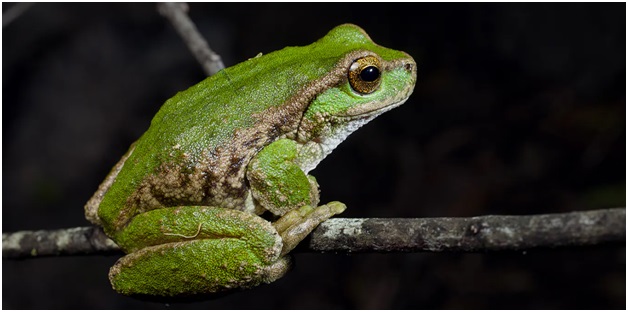Protein from Budgett’s frog can block enzymes of disease-causing pathogens (The Hindu)

- 11 Dec 2023
Why is it in the News?
Researchers from the Indian Institute of Science’s (IISc.) molecular biophysics unit in a study have identified that peptides (short protein) produced from Budgett’s frog can combat enzymes of disease-causing pathogens.
Key Research Findings:
- The research focused on peptides, or short proteins, derived from amphibian skin, a subject of prolonged study due to their capacity to counter adverse environmental conditions, including harmful pathogens.
- A peptide secreted by frogs demonstrated inhibitory effects on two crucial enzymes, namely subtilisin Carlsberg and proteinase K, which are produced by pathogens.
- These enzymes play a crucial role in fostering infections by breaking down specific protective proteins within the infected individual.
- The studied peptide exhibited its inhibitory action through a slow-tight binding pathway, proving to be as effective as SSI, a well-established subtilisin inhibitor.
- The researchers illustrated the formation of a Michaelis complex—an intact, noncovalent complex with the inhibitor—during the process.
About Budgett’s frog:
- Budgett’s frogs exhibit high intelligence and a notably assertive nature.
- When alarmed, they employ a defensive strategy by inflating themselves, standing on short legs, and, if necessary, lunging at potential threats with an open, imposing mouth accompanied by a distinctive shriek.
- During the dry season, these frogs take refuge in burrows they construct at the bottoms of water pools.
- Within these burrows, they shed multiple layers of skin to create a waterproof cocoon, ensuring their moisture retention.
- Equipped with exceptional night vision and a keen sensitivity to movement, Budgett’s frogs showcase effective hunting skills.
- Habitat/Range: Found in proximity to permanent or seasonal bodies of water, Budgett’s frogs inhabit regions across Paraguay, Argentina, and Bolivia.
- Conservation Status:
- IUCN Red List: Classified as Least Concern.
